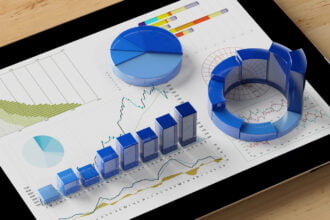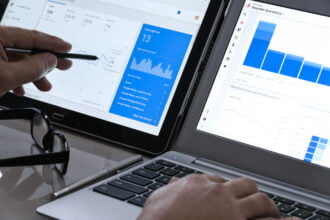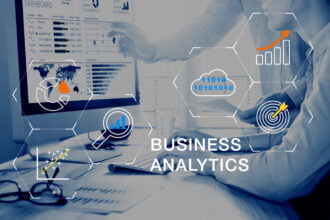Analytics technology is very important for modern business. Companies spent over $240 billion on big data analytics last year. That figure is expected to grow as more businesses discover its benefits.
There are many important applications of data analytics technology. One of the most important is with helping companies set their prices correctly.
Analytics Can Be Essential for Helping Companies with their Pricing Strategies
We all know how difficult it can be to get the pricing right in B2B contexts. In today’s business world, pricing has become one of the most important parts of a company’s strategy. Prices must account for the company’s key value metric, cost structure, buyer personas, and other factors like competition.
Analytics technology can help companies optimize their prices more effectively. Last year, Tullika Tiwary addressed some of the reasons in her post in CustomerThink. Here are some ways companies can benefit from an analytics-driven pricing strategy:
- Analytics helps companies segment their customers, so they can get a better understanding of their behavior. This helps them determine how different customer segments will behave in various situations, which helps them set their prices appropriately.
- Analytics can use existing data to model scenarios where customers will respond to different prices.
- Analytics technology helps companies make more nuanced insights about different products and the prices they should charge for them.
This article will walk you through 5 top B2B pricing models that you should consider when determining your own strategy. We will also talk about ways to incorporate data analytics into these models. We will also introduce methods to help you choose which model is right for your organization, as well as the implications of selecting a particular model.
Why Is It Important To Use Get B2B Pricing Right?
When you get the pricing right for your B2B business, you demonstrate your knowledge about buyer personas and their needs. You are proving that you understand your value-based metric and the dynamic factors in the marketplace, such as changes in the economy.
You are making buyers aware of how their competitors price their products and services to make informed decisions about what to pay for yours. That is why getting B2B pricing right is essential if you’re going to make a business value for your consumers and profit from it.
Since pricing strategies are so important, it is essential to use all technology at your fingertips to make the best pricing decisions. Analytics technology can help you significantly in this regard.
5 Top B2B Pricing Models and Ways to Use Analytics with Them
The best way to get the pricing right in B2B contexts is to consider how customer personas value your product or service, how price affects the buyer (their buying process), and your company’s cost structure.
We’ll look at each of these factors in detail and discuss their implications for successful B2B pricing decisions and how to use analytics with them.
Cost-Plus Pricing
The cost-plus pricing model is often used by small businesses that don’t have a lot of experience in B2B pricing. In this model, you create a cost structure for your product, then add a required profit margin. You can use analytics tools to track costs of your inputs and set prices correctly.
Value-Based Pricing
In a value-based pricing model, your price is determined by the value you provide to your buyer. The seller usually determines the price based on their ideal solution for a particular task as well as their budget. The value-based model is appropriate for companies focused on adding high-value products and services to their product offerings or just starting.
Analytics technology can be very useful in this regard, especially when costs are not static. You can use analytics models to forecast future costs of your inputs and apply the right markups on your products.
Needs-Based Pricing
Needs-based pricing is the opposite of value-based pricing. You may read here about the main differences. It considers a solution’s costs and benefits rather than its value to buyers. These are usually strictly business decisions where there is no selling involved. This method will help when you’re making decisions about services that add value to your overall product offering – for example, a consulting arm of your business or extra features on your SaaS solution.
Again, analytics technology can be very helpful, although the benefits will be applied in reverse. You will use data mining tools to understand the values customers get from various products and services and analytics technology will help you assess them. This will help you make more nuanced decisions.
Competition-Based Pricing
Competition-based pricing is a relatively straightforward approach that you can use for either new or existing B2B businesses. In this model, you look at your competitors’ prices and adjust yours appropriately to make sure your product or service is still profitable. You are interested in how the market reacts to your price and how consumers perceive it.
Analytics technology will help you better understand your competitors. You can use data mining tools to research pricing and sales volume of your competitors. This will help you understand your competitors and price your own products accordingly.
Dynamic Pricing
Dynamic pricing takes into account external factors that affect the buyer’s decision-making process. It can apply to any of the models we’ve discussed so far and is extremely useful when buyers are particularly sensitive about costs or when their cost structures change quickly over time.
This is one of the biggest reasons analytics is important. External variables that affect prices change quickly in many industries. You can use real-time data to stay up on these trends and take advantage of analytics to make the right decisions.
Choosing the Best Analytics-Driven Pricing Strategy
Once you’ve determined which analytics-based pricing model is right for you in your B2B situation, you need to pick the one that will work best in that context. You can do this by considering your value metric and then deciding based on it.
Know Your Value Metric
Your value metric is the yardstick to which you’re measuring your benefits to customers. It usually accounts for what your product or service gives customers (its value), as well as how long it lasts and how much of an impact it has on their lives.
Utilize Buyer Personas
Before choosing a pricing strategy for your B2B business, you need to know who your buyer persona is. Buyer personas are archetypes of real potential buyers that you create after analyzing the data about the type of person who would buy your solution. You should have complete knowledge about their age, profession, income level, and other information that will help you tailor your product or service to their needs.
Decide On A Pricing Model
With this information, you will be able to make more informed decisions regarding your pricing model and be able to make more money in the process. This works in both B2B and B2C contexts – whether you’re running a consulting business or launching a new SaaS solution that solves certain problems for companies in the industry they belong to, this guide will help you understand how to price your product or service properly.
Consider Buyer Expectations
There are many things that potential buyers expect from a product or service and what they need from it. For example, some buyers just want an easy way to access a service in their preferred way, while others may also want to make money on it as well – for example, by selling it to other businesses or customers. Understanding this will help you determine whether your product or service is suitable for those buyers and ensure that your B2B business is successful in the long run.
Take Into Account All Other Factors
Before deciding what type of pricing model will work best for your particular business, consider all other factors that affect how you price your product or service. Your company’s cost structure, its ability to work with clients, and market demand are just some examples.
Analytics is Vital in Pricing Strategies
Pricing strategies are different for B2B and B2C contexts, but the core principles of effective pricing strategies apply to both. The key to getting B2B pricing right is knowing how to read the data and information in your marketplace, your company’s cost structure, your value metric, and what buyers expect from a product or service. You will need the right analytics tools and the right pricing strategy to make the best decisions.
If you want to make more money with your business or just get the most out of it, use this guide today to get solid insights on how you can do it. It will help you determine the right pricing model for your needs and choose it so you can start using it immediately.











